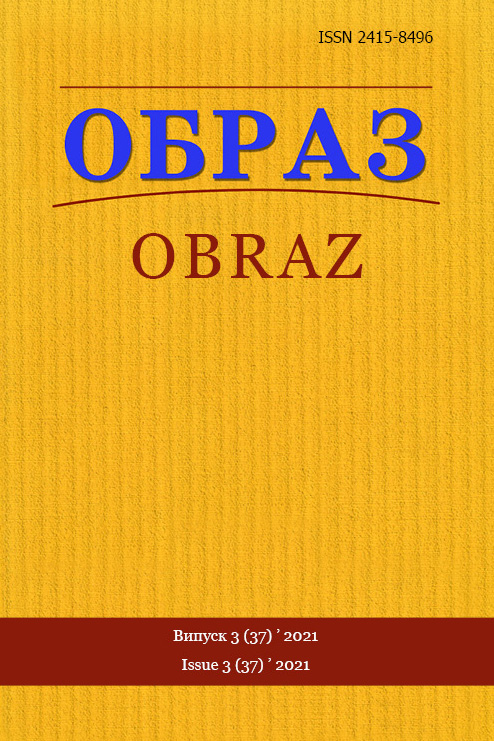Abstract
Introduction. Satire and humor are a kind of comic character and one of the most interesting genres that enrich the press with a unique style, image, and emotionality. As practice shows, satirical and critical publications take a leading place in journalism. Relevance of research is that satire and humor heritage of revival travel adventure of Rivne press remains the unexplored phenomenon, despite the fact that these genres constantly attracts the attention of researchers. The research methodology is based on a systematic approach, the obligation of which allows getting a deeper understanding of the features of the formation of satirical genres that create an adventure route. The survey has applied comparative and historical method: general and special features were found out by comparing method, and the reasons of these similarities and differences, changes. Trends and main regularities of formation of modern travel media text were defined. Results and discussion. There is every reason to consider publications with elements of travel adventures to some extent scientific and journalistic text, even on formal grounds, as it presents the necessary scientific apparatus: notes, photographs, historical, geographical, household information, applications. The image of the reader in a journalistic text is one of the forms of expression of the author’s position. This is especially important when the publication is aimed at a readership which has some idea of the problem or situation being described. The need to single out satirical genres that recreate the adventure route in regional publications is indicated by the nature of creative work, when the publication is aimed at a readership that has some idea of the problem or situation described. Thus, the studied satirical genres are directly aimed at the reader, and the recipient enters the genre fabric as a participant in the process of «truth-seeking». Therefore, the text of satirical genres has at least two addressees. First, it is aimed directly at the person in question. Secondly, it is focused on dialogue with the reader, which can be expressed as a satirical component. Conclusions and prospects. A review of satirical genres that recreate the adventure route in regional publications and travel themes allows summarizing that in contrast to the literary text, which shows the dissimilarity of the real and internal subject of the story, the journalistic text identifies the author with a specific biographical personality, which has special psychological impact on target audience.
References
1. Zdorovega, V. (2004), Theory and Methods of Journalistic Creativity: a Textbook, 2nd ed., Reworked, PAIS, L., 268 p.
2. Zelenyuk, Y. (2012), «Travel journals on the Ukrainian media market», Derzhava ta Regiony [State and Regions.], Series: Social Communications, Zaporozhye, no. 1, pр. 52–55.
3. Kalinyushko, O. (2014), «Genre modifications of the travelogue in Olga Tokarchuk’s novel «Runners», Molodyj Vchenyj [A Young Scientist], no. 6 (2), pp. 88–92.
4. Mikhailin, I. (2002), Fundamentals of Journalism: a Textbook, 284 p.
5. Sukontsev, A. (1989), Before and After the Feuilleton: a Textbook, Thought, M., 252 p.
6. Holloway, J. (2008), «Public communications and their role in tourism», Turystycheskyj Marketing, [Tourist Marketing], K., pp. 390–422.
7. Chornous, C. (2009), «The evolution of the travel genre in Polish literature. Volyn-Zhytomyr region», Istoryko-filologichnyj Zbirnyk z Regionalnyx Problem [Historical and Philological Collection on Regional Issues], no. 19, p. 67–74.
8. Shabat-Savka, S. (2013), «Communicative intention in the sociolinguistic aspect», Mova i Suspilstvo [Language and society], Lviv, no. 4, pp. 43–51.
9. Shabat-Savka, S. (2015), «Communicative intention as an interlevel linguistic category», Movoznavchyj zbirnyk [Linguistic collection], Cherkasy, Iss. 20, pp. 114–120. URL : lingejournal.cdu.edu.ua/article/view/853.
10. Yufereva, O. (2010), Genre-genus Synthesis in the Poetic Diary and Travel (Ukrainian and Russian Literature of the XIX – early XX centuries): monograph., Zaporozhye, 268 p.
11. Yufereva, O. (2011), «The crisis of travel journalism and ways to overcome it (review of modern foreign research)», Derzhava ta Regiony [State and Regions], Series: Humanities, Zaporozhye, no. 3, pp. 144–147.
12. Yufereva, O. (2013), «Media-travelogue in the modern printed edition: genre origins, specifics, modifications», Visnyk Lvivskogo universytetu [Bulletin of Lviv University], Journalism series, iss. 38, pp. 235–241.
13. Yufereva, O. (2013), «Principles of media ritualization in Ukrainian travel magazines», Derzhava ta Regiony [State and Regions], Series: Social Communications, Zaporozhye, no. 1, pp. 121–124.
14. Yarmysh, Y. (2003), Genres of Satirical Journalism: a Textbook, Institute of Journalism, faculties and departments of journalism; for order prof. V. V. Rizun, Kyiv, 156 p.
15. Hanusch, F. (2010), «Dimensions of Trevel Journalism: Exploring New Areas of Journalistic Research Beyond News», Journalism Studies, vol. 11 (1), pp. 68–82.
16. Oxford Advanced Learner`s Dictionary of Current English, sixth edition, Oxford University Press, (2000), 1780 p.
17. Searle, J.R. (1993), Intentionality: An Essay in the Philosophy of Mind, CUP, Cambridge, 278 p.

This work is licensed under a Creative Commons Attribution 4.0 International License.

